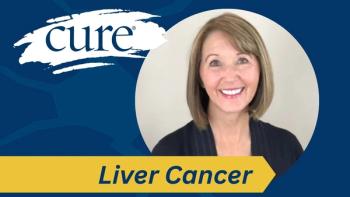
FDA Grants Brigatinib Priority Review for Lung Cancer
The FDA granted brigatinib a priority review for the treatment of certain patients with non-small cell lung cancer.
Brigatinib was granted a priority review to a new drug application (NDA) by the U.S. Food and Drug Administration (FDA) for patients with metastatic ALK-positive non—small cell lung cancer (NSCLC) who are resistant to prior Xalkori (crizotinib), according to a statement from the drug's developer, Ariad Pharmaceuticals.
The NDA, which follows a breakthrough therapy designation that was received in October 2014, is based on findings from the phase 2 ALTA trial. In results from the trial presented at the 2016 American Society of Clinical Oncology (ASCO) Annual Meeting, the confirmed objective response rate (ORR) for brigatinib at 180 mg daily was 54 percent and the median progression-free survival (PFS) was 12.9 months. Under the Prescription Drug User Fee Act, the FDA is scheduled to make a final decision on the NDA by April 29, 2017.
“The FDA acceptance of our application is an important milestone in our ongoing efforts to discover, develop and deliver highly innovative treatments for patients with rare cancers,” Paris Panayiotopoulos, president and chief executive officer of ARIAD, said in a statement.
“We are pleased that our significant R&D investments in brigatinib and our work with the FDA are bringing us closer to potentially offering a treatment option for patients with ALK+ NSCLC who are refractory to crizotinib. We look forward to continuing to work closely with the FDA during the brigatinib NDA review and remain committed to developing critical therapies for unserved and underserved small patient populations suffering from rare cancers,” added Panayiotopoulos.
The ALTA trial enrolled 222 patients with ALK-positive NSCLC following progression on Xalkori. Patients were randomized to receive brigatinib at either 90 mg daily (12 patients) or 180 mg daily with a seven-day lead in period at 90 mg per day (110 patients). Sixty-nine percent of patients had brain metastases at the time of enrollment.
The median age of patients across the study was 54 years, and ECOG performance status (PS) was primarily 0 and 1 (93 percent), with 7 percent having an ECOG PS of 2. Sixty percent of patients did not have a smoking history prior to entering the trial and 74 percent had received prior chemotherapy. Sixty-five percent of patients had experienced a complete or partial response to Xalkori.
The confirmed ORR was 45 percent in the 90 mg arm. In those who had not received prior chemotherapy, the ORR was 52 percent. In the 180 mg dose group, those who had not received chemotherapy had an ORR of 52 percent. There were four confirmed complete responses in the 180 mg arm and one in the 90 mg group. When considering stable disease rates, the disease control rate (DCR) was 86 percent with the 180 mg arm and 82 percent in the 90 mg arm.
The median PFS in the 90 mg arm was 9.2 months. There was a 45 percent reduction in the risk of progression or death with the 180 mg dose of brigatinib versus the 90 mg dose. The one-year PFS rate was 39 percent with the 90 mg dose and 54 percent in the 180 mg arm.
The one-year overall survival (OS) rate was 71 percent with the 90 mg dose versus 80 percent with the larger 180 mg dose, representing a non statistically significant 43 percent reduction in the risk of death with the larger. The median OS had not yet been reached in both arms.
In those with measurable, active brain metastases treated with the 180 mg dose (18 patients), the intracranial ORR was 67 percent. The intracranial DCR was 83 percent. In those with brain metastases treated with the 90 mg dose, the intracranial ORR was 36 percent. The intracranial DCR was 88 percent. The median PFS in this group was 15.6 months with the 90 mg dose versus not reached in the 180 mg arm.
The most common all-grade treatment-emergent adverse events (AEs) in the 90 mg and 180 mg arms, respectively, were nausea (40 percent and 33 percent), diarrhea (38 percent and 19 percent), cough (34 percent and 18 percent) and headache (27 percent and 28 percent). The most common grade 3 or higher treatment emergent AEs in the 90 mg and 180 mg arms, respectively, were increased blood creatinine phosphokinase (9 percent and 3 percent) and hypertension (6 percent each).
There was a subset of patients (6 percent) who experienced early onset pulmonary AEs, which occurred within a median of two days (range, 1-9). These events occurred prior to dose escalation in the 180 mg arm. Overall, 8 percent and 3 percent of patients discontinued treatment due to AEs in the 90 mg and 180 mg arms, respectively.
The phase 3 ALTA-1L study has been initiated to compare brigatinib with Xalkori as a frontline therapy for patients with ALK-positive NSCLC. This study is assessing the 180-mg regimen of brigatinib (




